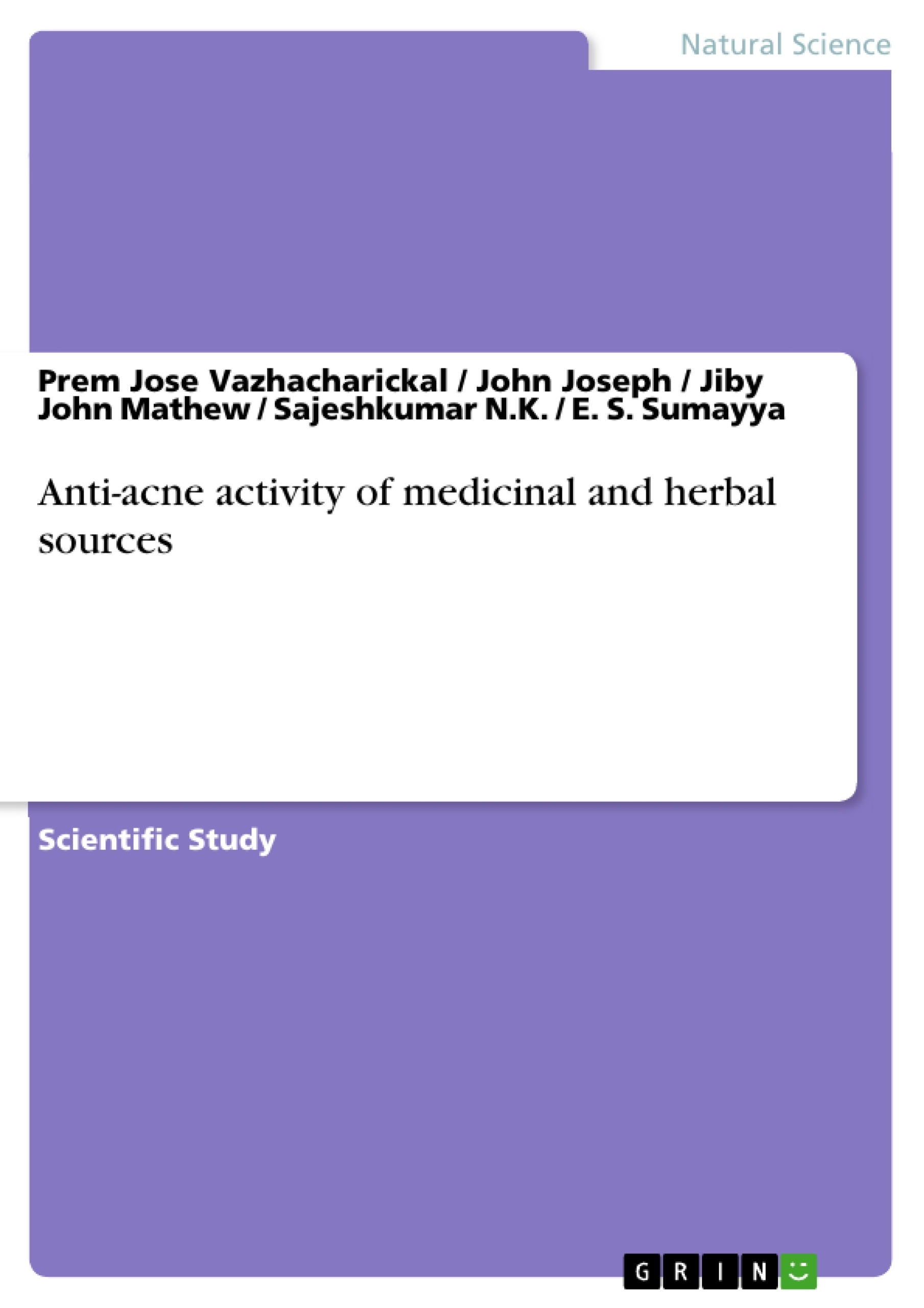In the current study, attempts are being made to search for new and cheaper remedy for acne. Here anti acne activity of various samples [Paste, cucumber, tomato, multani mitty (fullers earth),Guava leaf, turmeric and ointment(control)] was studied against Staphylococcus sp. The most effective samples used is guava leaf.
Acne is the most common skin disorder with a very high prevalence. Acne may be treated with a combination of remedies including over – the counter skin care, and medications, and chemical or laser procedures. All these treatments are comparatively costlier.
Inhaltsverzeichnis (Table of Contents)
- Abstract
- 1. Introduction
- 1.1 Aim
- 2. Review of literature
- 3. Hypothesis
- 4. Materials and Methods
- 4.1 Study area
- 4.2 Collection of samples
- 4.3 Pure culture preparation
- 4.4 Morphological and biochemical tests
- 4.5 Extract preparation
- 4.6 Antimicrobial activity
- 4.7 Treatment
- 4.8 Statistical analysis
- 5. Results and discussion
- 6. Conclusions
- References
Zielsetzung und Themenschwerpunkte (Objectives and Key Themes)
This research aims to investigate the anti-acne activity of medicinal and herbal sources. The study focuses on analyzing the antimicrobial properties of various plant extracts against Staphylococcus species, a common bacteria associated with acne.
- Antimicrobial properties of medicinal and herbal plants
- Acne treatment using natural remedies
- Staphylococcus species and their role in acne development
- Evaluation of plant extracts for their effectiveness against Staphylococcus
- Exploration of potential alternative acne treatments
Zusammenfassung der Kapitel (Chapter Summaries)
- Introduction: This chapter provides an overview of acne, its causes, and the prevalence of the condition. It also introduces the study's objectives and the rationale behind choosing medicinal and herbal sources for investigation.
- Review of Literature: This chapter reviews existing research on the anti-acne properties of various medicinal plants and their potential mechanisms of action. It explores the scientific evidence supporting the use of natural remedies for acne treatment.
- Materials and Methods: This chapter details the methods used in the study, including the collection of plant samples, preparation of extracts, isolation and identification of Staphylococcus species, and antimicrobial testing procedures.
- Results and Discussion: This chapter presents the results of the antimicrobial activity tests and discusses the findings in detail. It analyzes the effectiveness of different plant extracts against Staphylococcus species and explores potential correlations between plant properties and their antimicrobial activity.
Schlüsselwörter (Keywords)
Acne, anti-acne, medicinal plants, herbal sources, Staphylococcus, antimicrobial activity, natural remedies, plant extracts, zone of inhibition, alternative treatments.
- Arbeit zitieren
- Dr. Prem Jose Vazhacharickal (Autor:in), John Joseph (Autor:in), Jiby John Mathew (Autor:in), Sajeshkumar N.K. (Autor:in), E. S. Sumayya (Autor:in), 2017, Anti-acne activity of medicinal and herbal sources, München, GRIN Verlag, https://www.hausarbeiten.de/document/375896


